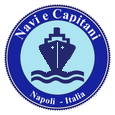Classificazione
|
Classification
|
L.R.
n. - |
| Bandiera |
Flag
|
Olanda
- Netherlands |
| Armatore |
Owner |
Nederlands
Scheepvaart Museum di Amsterdam |
| Operatore |
Manager |
Nederlands
Scheepvaart Museum di Amsterdam |
| Impostazione
chiglia |
Keel
laid |
|
| Varo |
Launched |
|
Consegnata
|
Delivered |
1900 |
| Cantiere
navale |
Shipyard |
Yard
Jan Meursing -Amsterdam |
| Costruzione
n. |
Yard
number |
|
| Tipo
di scafo |
Hull
type |
scafo
singolo - single hull |
| Materiale
dello scafo |
Hull
material |
acciaio
- steel |
| Nominativo
Internazionale |
Call
sign |
P
E 4 3 3 2 - 
 
 
 |
| I.M.O.
- International Maritime Organization |
1519350 |
M.M.S.I.
Maritime Mobile Service Identify
|
244700935 |
| E.N.
I. European Number of Identification |
02006647 |
| Compartimento
Marittimo |
Port
of Registry |
Amsterdam |
| Numero
di Registro |
Official
Number |
|
| Posizione
attuale |
Actual
position |
|
| Stazza
Lorda |
Gross
Tonnage |
|
| Stazza
Netta |
Net
Tonnage |
|
Portata(estiva)
|
DWT
(summer) |
|
| Dislocamento |
Displacement |
|
| Lunghezza
max |
L.o.a. |
31,25
m |
| Lunghezza
tra le Pp |
L.
between Pp |
|
| Larghezza
max |
Beam |
6,66
m |
| Altezza
di costruzione |
Depth
|
|
| Bordo
libero |
Freeboard |
|
| Pescaggio
max |
Draught
max |
1,89
m |
Motore
principale
|
Main
engine |
Macchina
alternativa a vapore - Alternative steam machine
- Scottish shipyards |
| Potenza
Motori |
Engine
power |
375
Hp |
Velocità
massima
|
Max
speed |
12,0
kn |
Eliche
di propulsione
|
Propellers |
1
- passo fisso / fixed pitch |
| Fuel
oil |
Fuel
oil |
|
| Acqua
dolce |
Fresh
water |
|
| Autonomia |
Range |
|
| Passeggeri |
Passengers |
|
| Equipaggio |
Crew |
|
| Inserita |
Posted |
29.06.2018
|
| Aggiornata
al |
Last
updated |
29.06.2018
|
Questa nave
in origine fu costruita come rompighiaccio, durante la costruzione nel
1900 aveva un'altro nome al momento sconosciuto, in seguito il ministro
dei lavori pubblici, del commercio e dell'industria, Cornelis Lely voleva
denominarlo come un famoso ingegnere la navale, ma la decisione si impantanò
nella burocrazia. Di conseguenza, la nave fu varata nel 1900 con un nome
diverso e molto più utilitaristico: DE IJSBREKER.
Il
Dipartimento di corsi d'acqua e opere pubbliche originariamente aveva
la nave costruita come un rompighiaccio che poteva anche servire come
nave esecutiva, questo spiega l'interno lussuoso della nave. Questa duplice
funzione era dettata da considerazioni puramente pratiche: dopo tutto,
perché lasciare inutilizzato un investimento così significativo
per la maggior parte dell'anno? Il governo aveva avuto buone esperienze
con una nave costruita in precedenza per lo stesso duplice scopo, l'Achille
(varato nel 1894).
I
rompighiaccio come Christiaan Brunings sono stati usati fin dal XVII secolo.
Disegni di quel tempo mostrano navi come queste, fatte di legno. I loro
archi curvi verso l'alto e le strette boscaglie piatte con la placcatura
di ferro venivano trainati dai cavalli (talvolta fino a venti!) Attraverso
canali coperti di ghiaccio. Ad ogni tiro, l'arco veniva estratto dall'acqua
per ricadere sullo strato di ghiaccio, rompendo il ghiaccio sotto il suo
peso. Questo principio cambiò poco attraverso i secoli, anche se
le navi sempre più potenti furono ricercate per farlo.
Fino
al tempo dell'Achille e del Brunings Christiaan, il dipartimento aveva
ingaggiato rompighiaccio da società private. La decisione di costruire
le proprie navi era principalmente dettata da considerazioni sui costi.
A quel tempo, combattere il ghiaccio era diventato uno dei compiti permanenti
del governo, uno che nella seconda metà del 19 ° secolo era
diventato una parte cruciale per prevenire le rotture di diga e le inondazioni.
|
In
1900, when the last nuts and bolts had been tightened on the icebreaker
Christiaan Brunings, she didn't bear the name that we know her by today.
Then-Minister of Public Works, Trade and Industry Cornelis Lely had approved
naming the ship after the famous marine engineer (1736-1805), but the
decision became mired in red tape. As a result, the ship was launched
in 1900 with a different and much more utilitarian name: De IJsbreker
(the Icebreaker).
The
Department of Waterways and Public Works originally had the ship built
as an icebreaker that could also serve as an executive vessel, which
explains the ship's luxurious interior. This dual function was dictated
by purely practical considerations: after all, why would you let such
a significant investment lie idle for most of the year? The government
had had good experiences with a ship previously built for the same dual
purpose, the Achilles (launched in 1894).
Icebreakers
like the Christiaan Brunings have been used as far back as the 17th
century. Drawings from that time show ships like these, made of wood.
Their upward-curving bows and flat forestays with iron plating were
drawn by horses (sometimes up to twenty!) through ice-covered canals.
With each pull, the bow would be drawn up from the water to fall back
onto the layer of ice, cracking the ice under its weight. This principle
changed little through the centuries, although more and more powerful
ships were sought to do it.
Up
until the time of the Achilles and the Christian Brunings, the Department
hired icebreakers from private parties. The decision to build their
own ships was primarily dictated by cost considerations. By this time,
fighting ice had become one of the government's standing tasks, one
that in the second half of the 19th century had become a crucial part
of preventing dike breaks and floods.
Former
names
|
Former
flags |
|
Galleria
fotografica
|
|
Photo
gallery
|
|



